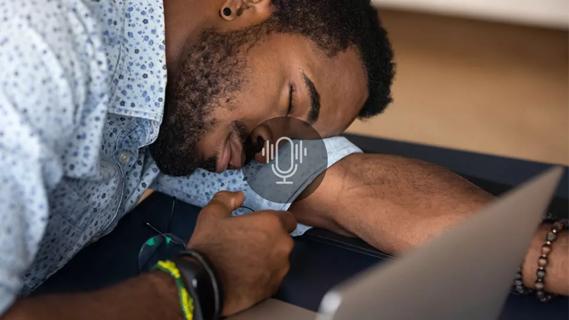Bedroom safety, medication use and ethical dilemmas are addressed

Maintaining a safe sleeping environment for patients with rapid-eye movement (REM) sleep behavior disorder (RBD) and their bed partners is critically important to prevent injury from falling out of bed, thrashing limbs or even unknowingly using a readily available weapon. Fortunately, evidence indicates that, in addition to environmental changes that patients can make, medications may help remediate the condition.
Advertisement
Cleveland Clinic is a non-profit academic medical center. Advertising on our site helps support our mission. We do not endorse non-Cleveland Clinic products or services. Policy
Recommendations from an American Academy of Sleep Medicine (AASM) task force of sleep medicine clinicians with expertise in managing RBD ― which involves physically enacting dreams ― were recently published in a clinical practice guideline in the Journal of Clinical Sleep Medicine (2023;19[4]:759-768). An accompanying article (2023;19[4]:769-810) provides a description of the process of evidence review and guideline creation.
“With an estimated 5% of older adults having this disorder, it’s important for primary care clinicians, geriatricians, neurologists and all sleep medicine providers to be able to confidently advise patients and their families on how to cope with it,” says AASM task force member Nancy Foldvary-Schaefer, DO, MS, a co-author of both articles and Director of the Sleep Disorders Center at Cleveland Clinic. “We were very rigorous in our review process to establish evidence-based recommendations.”
Normal REM sleep involves motor paralysis while dreaming, caused by inhibitory brainstem pathways. RBD develops when these pathways are disrupted, usually attributable to alpha-synuclein degeneration, a hallmark of Lewy body dementia, Parkinson’s disease and multiple system atrophy.
RBD can also be secondary to type 1 narcolepsy, particularly among young patients. In others, RBD is medication-induced.
“Idiopathic RBD” was the term formerly used when RBD cannot be identified as secondary to a disorder or to a medication. However, it has become well established that most patients affected in this way later develop one of the associated neurodegenerative disorders, so this category is now referred to as “isolated RBD.”
Advertisement
In the years since the previous AASM guideline on RBD was published in 2010, the literature on the subject has boomed. For this update, the task force reviewed 4,690 studies, although only 148 were deemed suitable for statistical analyses to develop the recommendations.
For the first time, the task force used the Grading of Recommendations, Assessment, Development and Evaluation (GRADE) process. Guidance recommendations were classified as either “strong” (based on good evidence and indicating that they are advisable under most circumstances) or “conditional” (based on weak evidence and indicating they should be considered in tandem with clinical judgement and patient input). Although 45 interventions are presented in the guideline, no drug treatment reached the level of a strong recommendation due to lack of evidence from randomized controlled trials.
Also new for this guideline process was the inclusion of two patients on the task force. Dr. Foldvary-Schaefer notes that the patients sometimes had different views from the clinicians, particularly on the ethical issue of how much to reveal about prognosis to patients with isolated RBD.
Dr. Foldvary-Schaefer highlights several takeaways from the guideline:
Advertisement
The guideline’s lack of strong recommendations underscore that more randomized controlled studies are needed, including direct comparisons of the currently used drugs. However, research is complicated by a dearth of objective evaluative measures. Cleveland Clinic is developing methods of collecting arm electromyography measurements, which are more specific for RBD than the currently used leg measurements, but the process is very labor-intensive.
Dr. Foldvary-Schaefer cautions clinicians not to overlook other more common parasomnias that can be confused with RBD. Sleepwalking and sleep terrors, for example, do not typically occur late in the sleep cycle during REM sleep.
Sometimes a patient actually has an obstructive sleep disorder, she adds, and “putting them on a continuous positive airway pressure machine often solves the problem.”
Advertisement
Advertisement

Study highlights value of sleep disorder screening and targeted management strategies

Specificity in study criteria yields sleep disorder insights

Large cohort study suggests need for routine sleep screening as part of neurological care

Testing options and therapies are expanding for this poorly understood sleep disorder

Normal or inconsistent MSLT results should not rule out this debilitating disorder

Advice for diagnosing and managing sleep disturbances in children

Insights into the six major categories of sleep disorders

Study explores association between sleep aid and eye disease